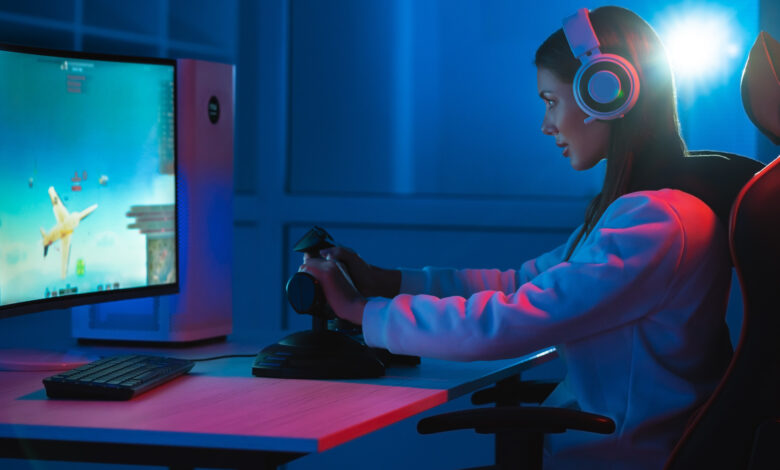Wheon.com Play Online Games: Your Ultimate Gateway to Free, Fun, and Fast Gaming

Wheon.com Play Online Games Online gaming has become a massive part of modern entertainment. Whether you’re a casual gamer looking for a quick thrill or a serious gamer seeking hours of fun, the variety of gaming options available today is astounding. One platform that stands out in offering an exciting, no-fuss gaming experience is Wheon.com Play Online Games. Known for its ease of access, vast selection of games, and commitment to providing an enjoyable experience for all users, Wheon.com Play Online Games is quickly becoming a go-to destination for online gaming enthusiasts.
In this article, we will dive into the features, benefits, and details of playing online games on Wheon.com Play Online Games. Whether you’re a first-timer or a seasoned gamer, this guide will provide you with everything you need to know about this fantastic platform.
Introduction: Why Wheon.com Play Online Games is a Go-To Destination for Online Gamers
With the rise of digital entertainment, the demand for free and accessible online games has surged. Wheon.com Play Online Games is capitalizing on this trend by offering a wide range of online games that are not only fun but also easy to access. Whether you’re using a smartphone, tablet, or computer, Wheon.com Play Online Games makes it incredibly simple to jump right into your favorite games without the need for time-consuming downloads or installations.
What truly sets Wheon.com Play Online Games apart is its user-friendly interface and commitment to providing a seamless gaming experience. Upon entering the website, users are greeted with a clean, visually appealing layout that allows for effortless navigation through different game categories. The platform’s design makes it accessible for gamers of all ages, ensuring that even those unfamiliar with online games can quickly understand how to access and enjoy the games on offer.
Moreover, Wheon.com Play Online Games keeps things fresh by frequently updating its game library with new titles. Whether you enjoy strategy games, puzzles, or fast-paced action, the platform ensures that there’s always something new to explore, catering to both new players and seasoned veterans alike.
Game Categories Available on Wheon.com Play Online Games
Wheon.com Play Online Games boasts a wide variety of game categories, making it an excellent destination for all types of gamers. Whether you’re in the mood for an adrenaline-pumping race or a slow-paced puzzle to test your brainpower, the site has it all.
Action and Adventure Games
For players who enjoy thrill and excitement, Wheon.com Play Online Games offers a collection of action and adventure games that allow you to dive into captivating storylines and intense gameplay. From navigating dangerous worlds to battling fierce enemies, these games provide an immersive experience. Whether it’s platforming challenges or epic quests, you can always find something to suit your gaming style.
Puzzle, Strategy, and Brain Teasers
If you prefer games that require critical thinking, Wheon.com Play Online Games’s puzzle and strategy categories will keep your mind engaged. These games often involve problem-solving and tactical decision-making, allowing you to build strategic plans and solve complex puzzles. Whether you’re solving jigsaw puzzles or engaging in intricate strategy games, these options are perfect for players looking to flex their intellectual muscles.
Multiplayer and Social Games
Multiplayer games on Wheon.com Play Online Games provide a great opportunity for friends and gamers worldwide to connect and compete. Whether you’re teaming up to tackle challenges or competing for high scores, these social games add a layer of interaction, making the gaming experience much more enjoyable. You can easily challenge your friends or join others in global competitions.
Sports, Racing, and Simulation Games
For those with a need for speed or a love for competitive sports, Wheon.com Play Online Games offers a great selection of racing and sports games. These titles range from realistic simulations to arcade-style gameplay, allowing players to experience their favorite sports, whether it’s football, basketball, or car racing.
Features and Benefits of Playing on Wheon.com Play Online Games
Wheon.com Play Online Games stands out because it offers a no-hassle gaming experience with multiple benefits. For starters, there are no downloads or installations required. All you need is a web browser, and you can start playing instantly. This is a huge plus for players who don’t want to wait for lengthy downloads or deal with storage issues.
No Downloads or Installations
Unlike traditional gaming platforms where downloading and installing games can take up valuable storage space and time, Wheon.com Play Online Games eliminates this hassle by offering instant play. Simply visit the website, browse through the wide selection of games, and start playing. This not only saves time but also ensures that you can jump straight into the action without any interruptions.
Cross-Platform Compatibility
Another major benefit of Wheon.com Play Online Games is its compatibility across various devices. Whether you’re on your smartphone, tablet, or desktop, the website is fully optimized to provide a smooth gaming experience. This ensures that players can enjoy their favorite games on the go or at home, without being tied to a specific device.
Safe and Enjoyable Experience
Wheon.com Play Online Games prides itself on providing a safe and secure gaming environment. With minimal advertisements and no intrusive pop-ups, the platform ensures that your experience remains enjoyable without unnecessary distractions. Additionally, the site uses secure protocols to protect user data, making it a trusted platform for gamers of all ages.
How to Get Started with Wheon.com Play Online Games
Getting started with Wheon.com Play Online Games is incredibly easy. There’s no need for complex sign-up processes or software installations. Here’s a simple guide to help you start playing:
Step 1: Access the Website
Simply navigate to Wheon.com Play Online Games from any web browser. The site’s responsive design will ensure it loads seamlessly on any device.
Step 2: Browse and Choose Your Game
The homepage features a range of games categorized by genre, making it easy to find something that suits your preferences. You can either browse the options or use the search bar to find a specific game.
Step 3: Start Playing
Once you’ve selected your game, simply click on it to begin playing. For most games, there’s no need for registration unless you want to save your progress or compete on leaderboards.
Step 4: Optional Account Registration
While you can enjoy most games without signing up, creating an account allows you to save your high scores, progress, and achievements. Registering also enables you to participate in community events and challenges.
Troubleshooting
If you experience any issues, such as games not loading or running slow, check your internet connection, refresh the page, or try using a different device. Wheon.com Play Online Games’s responsive design ensures that games run smoothly across a variety of systems.
Comparing Wheon.com Play Online Games to Other Online Gaming Platforms
While there are numerous online gaming platforms out there, Wheon.com Play Online Games distinguishes itself by offering a streamlined, hassle-free experience. But how does it compare to other popular platforms like Miniclip, Poki, or CrazyGames?
Wheon.com Play Online Games vs. Other Platforms
Unlike Miniclip or Poki, which often require users to download apps or sign up before playing, Wheon.com Play Online Games allows you to dive straight into the action with no strings attached. Additionally, Wheon.com Play Online Games focuses heavily on mobile and cross-platform compatibility, ensuring that users can play seamlessly across different devices.
While CrazyGames also offers free online gaming, Wheon.com Play Online Games’s minimalist approach to ads and its emphasis on a clean interface make it stand out. The platform’s consistent updates and new game additions provide a constant stream of fresh content, keeping users engaged for hours.
Conclusion: Is Wheon.com Play Online Games Worth Your Time as an Online Gamer?
If you’re looking for a platform that offers quick, fun, and diverse online games without the need for downloads or complex sign-ups, Wheon.com Play Online Games is definitely worth your time. Its wide variety of game genres, user-friendly interface, and cross-platform compatibility make it a top choice for both casual and dedicated gamers alike.
Whether you’re in the mood for a fast-paced action game, a strategic puzzle, or a competitive multiplayer challenge, Wheon.com Play Online Games has something for everyone. The platform’s commitment to providing a safe, ad-light experience ensures that your gaming sessions remain enjoyable without unnecessary distractions.
Also Read: What Is Zuivozraxkronosquz







